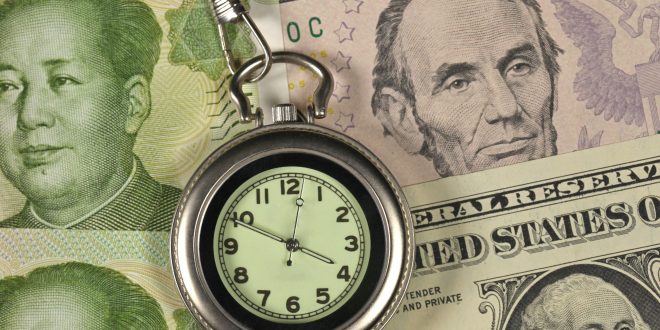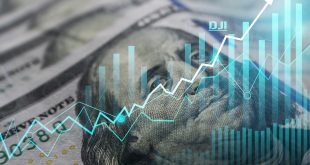In the first week of June, markets anticipated the jobs report in the United States, which came below expectations but still showed progress in the recovery from the coronavirus pandemic. The jobs report indicated that it would probably take more time than previously expected before the Federal Reserve begins changing its current easing policies. But the data also followed a report by the San Francisco Fed that the U.S. job market is showing conflicting signs, calling for a focus on the challenges that might be unnoticed.
The Organisation for Economic Co-operation and Development (OECD) has improved its expectations for the global economy this year, due to the rollout of the COVID-19 vaccine, which is helping in the fight against the Coronavirus pandemic. Vaccines are allowing reopening economies and businesses to resume their work as usual, according to a recent report by OECD. Now, the organization is expecting the global economy to grow by 5.8% in 2021 and by 4.4% in 2022, compared to previous growth estimates at 5.6% and 4.0%, respectively, as per the March outlook report.
Energy markets also showed positive signs after the OPEC+ alliance decided to stick to its current plan to gradually ease output cuts, with expectations for a rise in demand over the coming months.
Meanwhile, a decision by the U.S. Federal Reserve surprised markets when it was announced that the Fed will begin halting its purchases of corporate bonds, with plans to begin selling these assets over time to maintain market balance.
The move comes shortly after Fed officials suggested that before the central bank considers changing interest rates, it would likely begin by scaling back its massive asset purchases or the bond-buying program. A move that Chairman Jerome Powell vowed to warn the market about ahead of time to avoid any shocks to the debt market.
On another front, the Fed Chairman, Jerome Powell, distanced the central bank from climate and energy policies, saying that the climate risks is not something that monetary policy makes directly consider in taking their decision. The remarks came shortly after Jens Weidmann, President of the Deutsche Bundesbank and Member of the Governing Council of the European Central Bank (ECB), said that the central bank might move towards reducing its bond purchases from polluting companies, within the massive stimulus program. The remarks signaled a change in Weidmann’s position on an active role played by the ECB, as promoted by the bank’s President Christine Lagarde, in tackling climate risks.
Furthermore, Bank of England (BoE) Governor Andrew Bailey said that the case for financial institutions dedicating more capital to climate risks is yet to be clearly established. Baily warned that disorderly moving away from fossil fuels could disrupt markets and lead to a surge in inflation.
In Canada, the Real Gross Domestic Product (GDP) expanded at a monthly rate of 1.1% in March, slightly higher than the market expectation of 1% and following February’s 0.4% growth. The seasonally adjusted Ivey Purchasing Managers’ Index (PMI) also increased in May to 64.7 from 60.6 in April.
As for new developments in the fight against the pandemic, Russian officials reportedly said that they expect the World Health Organization (WHO) will approve the Sputnik V vaccine to be approved within two months. In the UK, the health minister said that the British government is in talks with Oxford and AstraZeneca to obtain additional doses of their COVID-19 vaccines that better target new variants. While in China, Sinopharm said it can provide one billion doses to the world before the end of 2021.
Dollar
The U.S. Dollar (USD) gave up some of its weekly but still managed to finish higher against major peers, supported by the positive economic data.
The Dollar Index (DXY), which measures the greenback’s performance against a basket of six international currencies, registered a weekly rise of about 0.34%, closing the week near 90.14, after closing the previous session above 90.50, near its highest level in about three weeks.
The data published by the U.S. Bureau of Labor Statistics showed that Nonfarm Payrolls (NFP) rose by 559,000 in May, folloing April’s figure of 278,000, and below the market expectations of a 650,000 rise. In addition, the unemployment rate fell to 5.8% last month from 6.1% in April.
New factory orders in the U.S. declined by more than expected in April, falling by 0.6%, following a rise of 1.4% in March, amid the global shortage in semiconductors, but surged by 14.2% on the yearly level. The semiconductor shortage led to a drop of 6.1% in the orders for motor vehicles and parts. Similarly, the orders for electrical equipment and appliances plunged by 0.7%. According to the U.S. Department of Commerce, April’s reading of the orders for non-defense capital goods was revised downwards to show an increase of 2.2%, down from an initial estimate of 2.3%.
As for the services sector, data showed that its economic activity expanded in May, maintaining growth for the 12th month in a row. The Institute for Supply Management(ISM) Services Purchasing Managers Index (PMI) reached a new all-time record high in May, registering 64%, after rising by 1.3% compared with its level in April at 62.7%. Similarly, the IHS Markit U.S. Composite PMI Output Index posted 68.7 last month, up from 63.5 in April, to signal the steepest upturn in business activity on record since 2009.
Furthermore, initial claims for unemployment benefits for the week ending May 29 declined to 385,000, better than the market expectation of 395,000 and following the previous reading of the revised 405,000.
The Fed’s Beige Book also showed that the U.S. economy grew at a moderate pace in April and May, highlighting expansion compared with the corresponding period of last year, as consumer spending rose on the back of stimulus packages and the rollout of coronavirus vaccines, contributing as well to higher inflation. The report indicated that recovery will likely lead to an economic boom, especially as more businesses reopen.
Euro
The Euro (EUR) declined due to the rise of the USD, with the EUR/USD pair finishing the week lower by about 0.23% at 1.2164.
Buying interest from investors limited the decline of the EUR/USD pair and pushed back into the 1.2160 territory from further declines, as it finished Thursday at 1.2127, its lowest closing level since May 14.
Against the British Pound (GBP), the EUR finished nearly unchanged, after three consecutive daily declines erased all of its gains earlier and led to a marginal decline for the EUR/GBP pair by about 0.01%.
Data showed that retail sales in the Eurozone fell more than expected in April, affected by a decline in sales of non-food products, but was still much higher than it was 12 months ago when most countries were subject to strict lockdown measures due to the pandemic. According to Eurostat, retail sales in the European bloc fell 3.1% on a monthly basis, but increased by 23.9% compared to the same period a year ago.
Earlier, the European Central Bank (ECB) said that creating a digital Euro could boost global demand for the currency, making it easier for broader use. This comes as the European Commission, the European Union’s executive arm, has vowed to enhance the use of the single currency outside of the bloc.
Gold
Despite its surge on Friday, gold futures still registered weekly losses, with the rise of the U.S. Dollar and Treasury bond yields.
Gold futures for August delivery finished the week at $1,892 per ounce, losing about 0.7% and failing to hold its ground and maintain the $1,900 key level.
The weekly performance showed that the yellow metal futures are less likely to maintain a mostly downward trend with demand for the safe haven providing support to gold contracts.
Meanwhile, silver futures for July delivery closed the week at $27.90 per ounce, down by 0.4%.
Oil
Oil futures registered large gains over the course of the week, finishing at to their highest levels in about two years, with positive forecasts for rising demand during the second half of the year
The global benchmark Brent crude futures for August delivery rose by 4.6% on a weekly basis to finish at $71.89 per barrel.
Meanwhile, the U.S. benchmark West Texas Intermediate (WTI) crude futures for July delivery finished at $69.62 per barrel, gaining 5% for the week.
The most recent short-term energy outlook by the U.S. Energy Information Administration (EIA) estimated that the world consumed 96.2 million barrels per day (b/d) of petroleum and liquid fuels in April, with an increase of 15.8 million b/d compare with the same month of 2020, but 4.0 million b/d less than April 2019.
The EIA forecasts that global consumption of petroleum and liquid fuels will average 97.7 million b/d for all of 2021, with an increase of 5.4 million b/d compared with last year. It also expects that the consumption of petroleum and liquid fuels will increase by 3.7 million b/d in 2022 to average 101.4 million b/d.
The next short-term energy outlook report is due on Tuesday.
Moreover, the number of active rigs drilling for crude oil and natural gas in the U.S., which is an early indicator of production levels, declined for the first time in six weeks.
According to the weekly report by Baker Hughes, the total rig count decreased by one to reach 456, with oil rigs maintaining their level at 359, and gas rigs decreasing by a single rig to 97.
This marked the fourth consecutive weekly decline for natural gas rigs, the longest period in about a year.
On an annual basis, the total rig count rose by 172 rigs, or 61%.
Wall Street
After some fluctuations, the New York Stock Exchange (NYSE) finished the week on a higher note, on the back of positive expectations for economic recovery.
The Dow Jones Industrial Average gained 0.7% on a weekly basis.
Meanwhile, the S&P 500 and the Nasdaq Composite Indices rose by 0.6% and 0.5%, respectively.
 Noor Trends News, Technical Analysis, Educational Tools and Recommendations
Noor Trends News, Technical Analysis, Educational Tools and Recommendations





